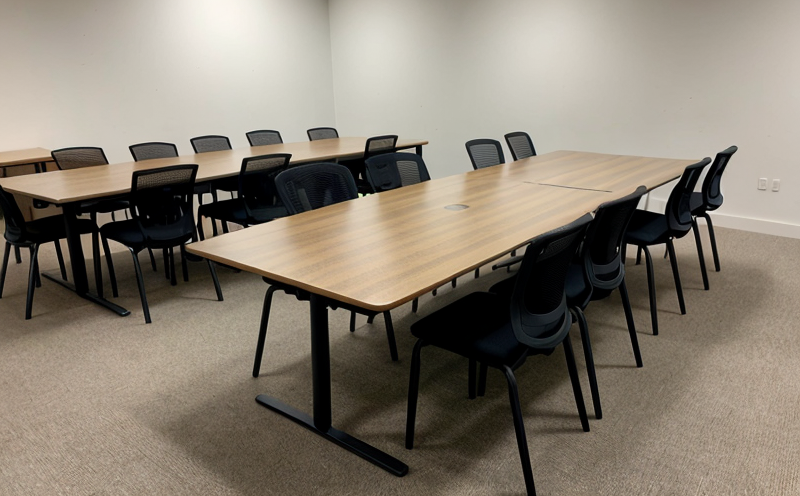DIN EN 12521 Household Tables Safety Requirements and Testing
The DIN EN 12521 standard is a comprehensive framework designed to ensure the safety of household tables used in domestic settings. This regulation sets out clear requirements for the design, construction, and performance testing of such furniture items to prevent accidents and injuries caused by structural failures or hazardous elements.
Developed through international collaboration involving experts from various industries, this standard covers a wide range of potential hazards associated with household tables, including tipping over, sharp edges, insufficient stability under load, inadequate strength in the event of impact, and improper assembly instructions. Compliance with DIN EN 12521 is essential for manufacturers seeking to meet market demand while protecting consumers from preventable risks.
The standard specifies detailed testing procedures aimed at identifying any deficiencies that could compromise user safety. These tests include static load tests to assess the table's ability to support specified weights without deformation or failure, dynamic impact tests simulating real-world impacts such as a child falling onto the surface, and stability checks under various loading conditions.
Manufacturers must also ensure their products meet specific dimensional requirements outlined in the standard. For instance, the height of the table should be appropriate for typical adult users to prevent strain or injury when seated around it. Additionally, edges and corners need to be rounded or padded where necessary to eliminate sharp points that could cause cuts.
Furthermore, the use of materials must comply with strict guidelines regarding durability, finish quality, and potential allergenic properties. This includes ensuring that any finishes applied do not contain harmful substances like formaldehyde or lead. Proper assembly instructions are also crucial; they should be clear enough for even novice users to follow safely.
Compliance testing typically involves multiple stages conducted by independent laboratories equipped with state-of-the-art equipment capable of replicating actual usage scenarios accurately. Results from these tests form part of the manufacturer's documentation, which is reviewed during certification processes. Successful completion of all required tests ensures that a product meets DIN EN 12521 requirements fully.
Adhering to this standard not only helps protect end-users but also enhances brand reputation by demonstrating commitment to high-quality manufacturing practices and consumer safety standards globally.
Applied Standards
| Standard Code | Description |
|---|---|
| DIN EN 12521:2017-09 | Harmonized European standard for household tables safety requirements and testing. |
| ISO 6483:2001 | International standard covering similar aspects of furniture design, particularly focusing on stability under load. |
Benefits
- Ensures product safety and reliability for domestic use.
- Promotes brand reputation through adherence to international standards.
- Reduces liability risks associated with accidents involving household tables.
- Aids in regulatory compliance, facilitating market entry into Europe.
- Facilitates easier product design by providing clear guidelines on acceptable practices.
Use Cases and Application Examples
- Manufacturing plants producing wooden dining sets for retail sale.
- Woodworking workshops specializing in crafting custom coffee tables for residential customers.
- R&D departments within furniture companies developing new materials or designs to enhance durability without compromising aesthetics.
- Procurement teams sourcing components like legs and tops from suppliers to ensure they meet specified strength criteria before integration into final products.





